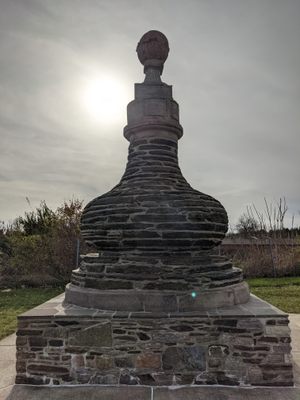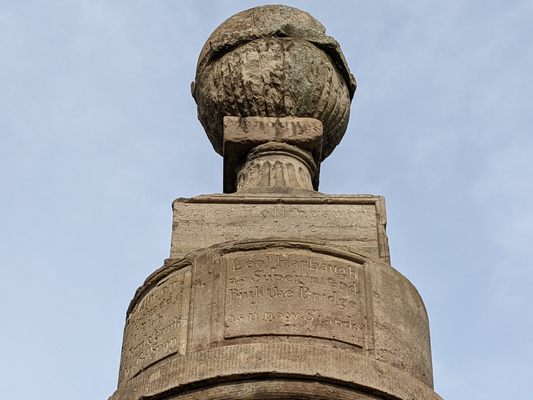About
The Jug Bridge was built in 1808 as part of the National Road to facilitate the crossing of the Monocacy River. It consisted of four 65-foot long stone arches spanning 425 feet with the namesake "jug" standing on the east end of the bridge.
The builder was a famed local stonemason named Leonard Harbaugh. He was also responsible for the three locks at Great Falls that helped ships to navigate the canals. He also designed several stone buildings in Baltimore and Georgetown.
A section of the bridge collapsed in 1942 and for two years, the fallen span was replaced with a wooden structure to support the passage of traffic. In 1944, a new bridge was completed to replace the structurally compromised Jug Bridge and the original span with its unique ornamentation was demolished.
The jug itself was saved as a monument and in 1965, it was relocated to a small park near the intersection of East Patrick Street and Bowman Road, approximately two miles west of where the bridge once stood.
Accompanying the Jug Bridge Monument, there is a large plaque affixed to a stone that stands on the spot where General Marquis de Lafayette delivered an address to express thanks for the hearty welcome he received upon his arrival in Frederick.
Related Tags
Know Before You Go
There is a small parking lot that facilitates safe visitation of the monument and a picnic table for visitors who might wish to enjoy a meal in a serene setting. The park is located directly across the street from Frederick Airport Park so plane-spotting is an added bonus.
Published
January 4, 2022








































